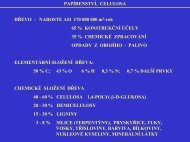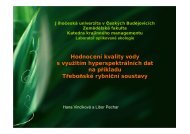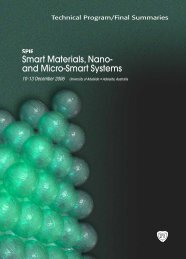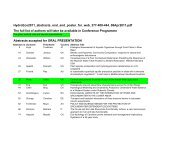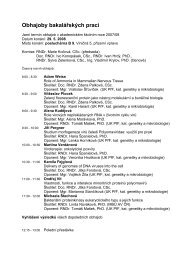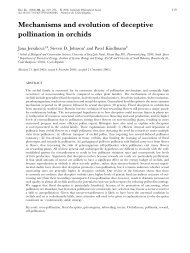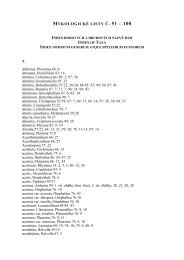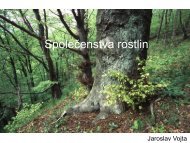Spatial distribution of phytoplankton in the eastern part of the North ...
Spatial distribution of phytoplankton in the eastern part of the North ...
Spatial distribution of phytoplankton in the eastern part of the North ...
- No tags were found...
Create successful ePaper yourself
Turn your PDF publications into a flip-book with our unique Google optimized e-Paper software.
3.3. Phytoplankton composition <strong>of</strong> <strong>the</strong> transectA total <strong>of</strong> 144 different specieswere found at all stations along <strong>the</strong>whole transect. The species list withvalues <strong>of</strong> relative abundances at allstations and references to plates are given<strong>in</strong> Tab. 7 at <strong>the</strong> end <strong>of</strong> <strong>the</strong> document.With 85 species, diatoms were <strong>the</strong>richest group. In comparison, only 44<strong>of</strong> <strong>the</strong> species found wered<strong>in</strong><strong>of</strong>lagellates. O<strong>the</strong>r algal groupsFigure 6. Total species numbers <strong>of</strong> different groups <strong>of</strong>were much less abundant (Fig. 6). The mar<strong>in</strong>e <strong>phytoplankton</strong>, found <strong>in</strong> <strong>the</strong> transect.highest number <strong>of</strong> algal species werefound at stations 153 and 151 (79taxa), located <strong>in</strong> <strong>the</strong> middle <strong>part</strong> <strong>of</strong> <strong>the</strong>transect. At both ends <strong>of</strong> <strong>the</strong> transect,where higher fluorescence wasmeasured, a lower number <strong>of</strong> specieswas found (Fig. 7). This differencewas caused ma<strong>in</strong>ly by changes <strong>in</strong> <strong>the</strong>number <strong>of</strong> d<strong>in</strong><strong>of</strong>lagellate species.Whereas <strong>the</strong> number <strong>of</strong> diatom speciesfound was similar at all stations, <strong>the</strong>Figure 7. <strong>Spatial</strong> variation <strong>in</strong> <strong>the</strong> species number <strong>of</strong>numbers <strong>of</strong> d<strong>in</strong><strong>of</strong>lagellate species were diatoms, d<strong>in</strong><strong>of</strong>lagellates and o<strong>the</strong>r algal groups.highest at stations <strong>in</strong> <strong>the</strong> middle <strong>of</strong> <strong>the</strong>transect.‣ Craspedophyceae – Two species <strong>of</strong> colourless flagellates – Calliacantha simplex andParvicorbicula socialis – were found <strong>in</strong> samples from stations 125 and 153. Both taxa bear anextracellular lorica, which structure serves as important taxonomic feature. The species were foundonly <strong>in</strong> TEM grids, prepared dur<strong>in</strong>g <strong>the</strong> sampl<strong>in</strong>g. Due to <strong>the</strong> small size <strong>of</strong> choan<strong>of</strong>lagellate species11




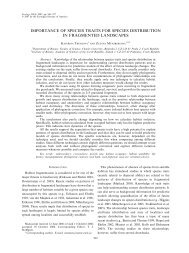
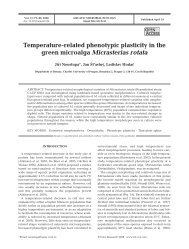
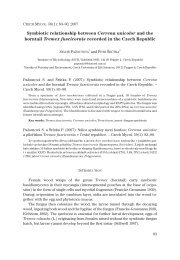
![[Cr(urea)6]Cl3](https://img.yumpu.com/47220263/1/184x260/crurea6cl3.jpg?quality=85)
